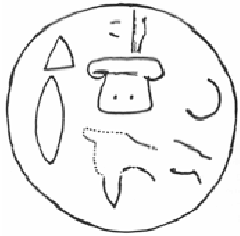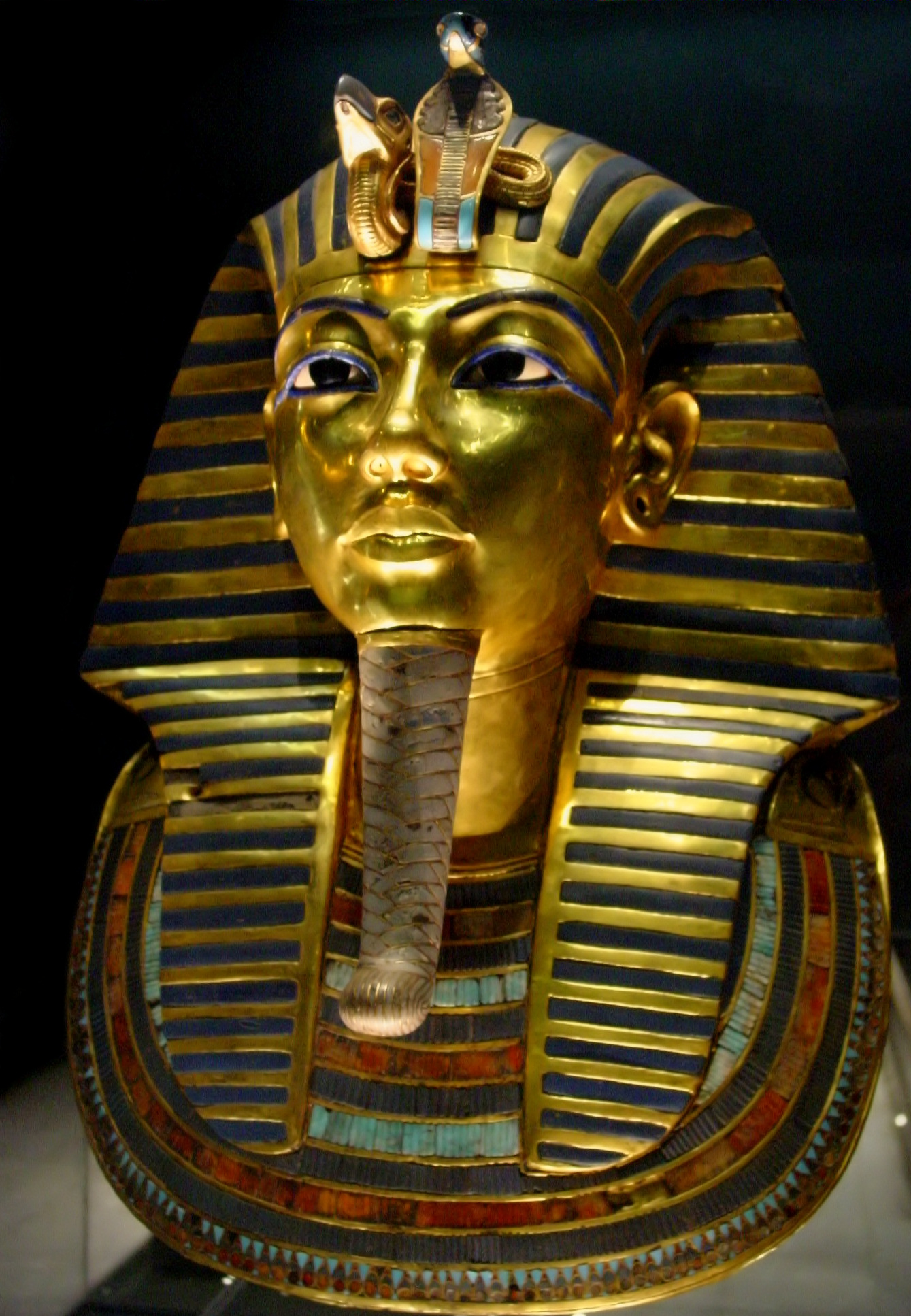|
Sun (hieroglyph)
The ancient Egyptian Sun hieroglyph is Gardiner sign listed no. N5 for the ''sun-disc'';Collier and Manley, 1998, ''How to Read Egyptian Hieroglyphs'', C1, sun-disc, p. 136. it is also one of the hieroglyphs that refers to the god Ra. The sun hieroglyph is used in the ancient Egyptian language hieroglyphs as a determinative to refer to events of time, for example when referring to '' '"day xx" (of month yy') ''. Even the " snap-of-the-finger", a 'moment', or 'instant' of time is represented using a Hippopotamus head (hieroglyph), Gardiner no. F3: F3, with the sun-disc: N5, as the time determinative in a hieroglyphic composition block.F3-N5:Z1.("instant")("moment"of"time") In the 24th century BC Palermo Stone, the ''sun hieroglyph'' is used on the ''Palermo Piece''-(obverse) of the 7-piece Palermo Stone to identify dates, or specific "day-events", ..."day of ...." A few of the King Year-Register's are dates only for example in Row V (of VI rows): N11:N11:N5 ! V20:V20:Z2ss !! ... [...More Info...] [...Related Items...] OR: [Wikipedia] [Google] [Baidu] |
Karnak Tempel 03
The Karnak Temple Complex, commonly known as Karnak (, which was originally derived from ar, خورنق ''Khurnaq'' "fortified village"), comprises a vast mix of decayed temples, pylons, chapels, and other buildings near Luxor, Egypt. Construction at the complex began during the reign of Senusret I (reigned 1971–1926 BCE) in the Middle Kingdom (around 2000–1700 BCE) and continued into the Ptolemaic Kingdom (305–30 BCE), although most of the extant buildings date from the New Kingdom. The area around Karnak was the ancient Egyptian ''Ipet-isut'' ("The Most Selected of Places") and the main place of worship of the 18th Dynastic Theban Triad, with the god Amun as its head. It is part of the monumental city of Thebes, and in 1979 it was inscribed on the UNESCO World Heritage List along with the rest of the city. The Karnak complex gives its name to the nearby, and partly surrounded, modern village of El-Karnak, north of Luxor. Overview The complex is a vast open si ... [...More Info...] [...Related Items...] OR: [Wikipedia] [Google] [Baidu] |
10 (hieroglyph)
The system of ancient Egyptian numerals was used in Ancient Egypt from around 3000 BCE until the early first millennium CE. It was a system of numeration based on multiples of ten, often rounded off to the higher power, written in hieroglyphs. The Egyptians had no concept of a place-valued system such as the decimal system. The hieratic form of numerals stressed an exact finite series notation, ciphered one-to-one onto the Egyptian alphabet. Digits and numbers The following hieroglyphs were used to denote powers of ten: Multiples of these values were expressed by repeating the symbol as many times as needed. For instance, a stone carving from Karnak shows the number 4,622 as: Egyptian hieroglyphs could be written in both directions (and even vertically). In this example the symbols decrease in value from top to bottom and from left to right. On the original stone carving, it is right-to-left, and the signs are thus reversed. Zero and negative numbers By 1740 BCE, the Egyp ... [...More Info...] [...Related Items...] OR: [Wikipedia] [Google] [Baidu] |
Bill Manley
Bill(s) may refer to: Common meanings * Banknote, paper cash (especially in the United States) * Bill (law), a proposed law put before a legislature * Invoice, commercial document issued by a seller to a buyer * Bill, a bird or animal's beak Places * Bill, Wyoming, an unincorporated community, United States * Billstown, Arkansas, an unincorporated community, United States * Billville, Indiana, an unincorporated community, United States People * Bill (given name) * Bill (surname) * Bill (footballer, born 1978), ''Alessandro Faria'', Togolese football forward * Bill (footballer, born 1984), ''Rosimar Amâncio'', a Brazilian football forward * Bill (footballer, born 1999), ''Fabricio Rodrigues da Silva Ferreira'', a Brazilian forward Arts, media, and entertainment Characters * Bill (''Kill Bill''), a character in the ''Kill Bill'' films * William “Bill“ S. Preston, Esquire, The first of the titular duo of the Bill & Ted film series * A lizard in Lewis Carroll's ''Alice's Adve ... [...More Info...] [...Related Items...] OR: [Wikipedia] [Google] [Baidu] |
Mark Collier (Egyptologist)
Mark H. Collier (died February 8, 2022) was an American religious scholar and academic administrator who served as the seventh president of Baldwin-Wallace College in Berea, Ohio, from 1999 to 2006. Life and career Collier served as minister of the North Olmsted United Methodist Church in North Olmsted, Ohio. He began his career with Baldwin-Wallace College in 1974 as college chaplain and professor of religion. He was appointed associate dean of academics and director of the college's Mission Action Project. In 1981, Collier became dean of the college upon Neal Malicky Neal Malicky (born 1934) served as the sixth president of Baldwin-Wallace College (now Baldwin Wallace University) in Berea, Ohio from 1981 to 1999. Malicky was succeeded by Mark H. Collier in 1999. A building on the north side of BW's campus bear ...'s elevation to college president. Collier was appointed president of Baldwin-Wallace in 1999, following Malicky's retirement. During his presidency Collier oversaw ... [...More Info...] [...Related Items...] OR: [Wikipedia] [Google] [Baidu] |
Sun Rising-Coronation (hieroglyph)
The Egyptian hieroglyph Rising Sun (Gardiner N28) is used to represent "coronation", and related meanings (festivals, parades, rejoicing, etc.). Its phonetic value is ''ḫꜥ'' ("kha"). It is used in the Horus name of pharaoh Khasekhemwy (''Ḫꜥj-sḫm.wj'') of the Second Dynasty. Language usage of "Rising sun"-(Khā) See also * Gardiner's Sign List#N. Sky, Earth, Water * List of Egyptian hieroglyphs *Sun (hieroglyph) *Egyptian biliteral signs The biliteral Egyptian hieroglyphs are hieroglyphs which represent a specific sequence of two consonants. The listed hieroglyphs focus on the consonant combinations rather than the meanings behind the hieroglyphs. See also *Transliteration of an ... References {{Commons category, Sunrise (hieroglyph) Egyptian hieroglyphs: sky-earth-water ... [...More Info...] [...Related Items...] OR: [Wikipedia] [Google] [Baidu] |
List Of Egyptian Hieroglyphs
The total number of distinct Egyptian hieroglyphs increased over time from several hundred in the Middle Kingdom to several thousand during the Ptolemaic Kingdom. In 1928/1929 Alan Gardiner published an overview of hieroglyphs, Gardiner's sign list, the basic modern standard. It describes 763 signs in 26 categories (A–Z, roughly). Georg Möller compiled more extensive lists, organized by historical epoch (published posthumously in 1927 and 1936). In Unicode, the block ''Egyptian Hieroglyphs'' (2009) includes 1071 signs, organization based on Gardiner's list. As of 2016, there is a proposal by Michael Everson to extend the Unicode standard to comprise Möller's list. Subsets Notable subsets of hieroglyphs: * Determinatives * Uniliteral signs * Biliteral signs * Triliteral signs * Egyptian numerals Letter classification by Gardiner List of hieroglyphs In Unicode Unicode character names follow Gardiner's sign list (padded with zeroes to three digits, i.e. Ga ... [...More Info...] [...Related Items...] OR: [Wikipedia] [Google] [Baidu] |
Luwian Hieroglyphs
Anatolian hieroglyphs are an indigenous logographic script native to central Anatolia, consisting of some 500 signs. They were once commonly known as Hittite hieroglyphs, but the language they encode proved to be Luwian, not Hittite, and the term Luwian hieroglyphs is used in English publications. They are typologically similar to Egyptian hieroglyphs, but do not derive graphically from that script, and they are not known to have played the sacred role of hieroglyphs in Egypt. There is no demonstrable connection to Hittite cuneiform. History Individual Anatolian hieroglyphs are attested from the second and early first millennia BC across Anatolia and into modern Syria. A biconvex bronze personal seal was found in the Troy VIIb level (later half of the 12th century BC) inscribed with Luwian Hieroglyphs. The earliest examples occur on personal seals, but these consist only of names, titles, and auspicious signs, and it is not certain that they represent language. Most actual tex ... [...More Info...] [...Related Items...] OR: [Wikipedia] [Google] [Baidu] |
Luwian Language
Luwian (), sometimes known as Luvian or Luish, is an ancient language, or group of languages, within the Anatolian branch of the Indo-European language family. The ethnonym Luwian comes from ''Luwiya'' (also spelled ''Luwia'' or ''Luvia'') – the name of the region in which the Luwians lived. Luwiya is attested, for example, in the Hittite laws. The two varieties of Proto-Luwian or Luwian (in the narrow sense of these names) are known after the scripts in which they were written: Cuneiform Luwian (''CLuwian'') and Hieroglyphic Luwian (''HLuwian''). There is no consensus as to whether these were a single language or two closely related languages. Classification Several other Anatolian languages – particularly Carian, Lycian, Lydian and Milyan (also known as Lycian B or Lycian II) – are now usually identified as related to Luwian – and as mutually connected more closely than other constituents of the Anatolian branch.Anna Bauer, 2014, ''Morphosyntax of the Noun ... [...More Info...] [...Related Items...] OR: [Wikipedia] [Google] [Baidu] |
Uraeus
The Uraeus (), or Ouraeus (Ancient Greek: , ; Egyptian: ', "rearing cobra"), ''(plural: Uraei)'' is the stylized, upright form of an Egyptian cobra, used as a symbol of sovereignty, royalty, deity and divine authority in ancient Egypt. Symbolism The Uraeus is a symbol for the goddess Wadjet.Egyptian-Gods She was one of the earliest Egyptian deities and was often depicted as a cobra, as she is the serpent goddess. The center of her cult was in Per-Wadjet, later called Buto by the Greeks. She became the patroness of the Nile Delta and the protector of all of Lower Egypt. The pharaohs wore the uraeus as a head ornament: either with the body of Wadjet atop the head, or as a crown encircling the head; this indicated Wadjet's protection and reinforced the pharaoh's claim over the land. In whatever manner that the Uraeus was displayed upon the pharaoh's head, it was, in effect, part of the pharaoh's crown. The pharaoh was recognized only by wearing the Uraeus, which conveyed legit ... [...More Info...] [...Related Items...] OR: [Wikipedia] [Google] [Baidu] |
Sun-rising (hieroglyph)
The Egyptian hieroglyph Rising Sun (Gardiner N28) is used to represent "coronation", and related meanings (festivals, parades, rejoicing, etc.). Its phonetic value is ''ḫꜥ'' ("kha"). It is used in the Horus name of pharaoh Khasekhemwy (''Ḫꜥj-sḫm.wj'') of the Second Dynasty. Language usage of "Rising sun"-(Khā) See also * Gardiner's Sign List#N. Sky, Earth, Water *List of Egyptian hieroglyphs *Sun (hieroglyph) *Egyptian biliteral signs The biliteral Egyptian hieroglyphs are hieroglyphs which represent a specific sequence of two consonants. The listed hieroglyphs focus on the consonant combinations rather than the meanings behind the hieroglyphs. See also *Transliteration of an ... References {{Commons category, Sunrise (hieroglyph) Egyptian hieroglyphs: sky-earth-water ... [...More Info...] [...Related Items...] OR: [Wikipedia] [Google] [Baidu] |
Crescent Moon (hieroglyph)
Crescent moon may refer to: Lunar phases *Fingernail moon, a lunar phase waxing until 7 days after or waning since 7 days before the new moon *Hilal (crescent moon), an Arabic term for the very slight crescent moon that is first visible after a new moon Arts, entertainment, and media * Crescent Moon (comics), a fictional DC comics character * ''Crescent Moon'' (manga), the English title of the shōjo manga Mikan no Tsuki * "Crescent Moon" (song), Mika Nakashima's 2nd single * "Crescent Moon" (''The Avengers''), an episode of the television series ''The Avengers'' *Crescent Moon Darnel, nicknamed Cress, a character in ''The Lunar Chronicles'' by Marissa Meyer *''The Crescent Moon'', a 1913 collection of poetry by Rabindranath Tagore *The crescent moon featured in the logo for the English dub of ''Sailor Moon''. Other uses * Anjaneyasana, or crescent moon, an asana (body position) in yoga *Crescent Moon Society The Crescent Moon Society () was a Chinese literary society founded by t ... [...More Info...] [...Related Items...] OR: [Wikipedia] [Google] [Baidu] |



